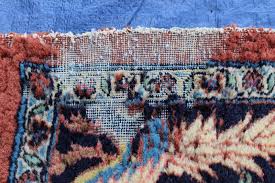Moth Damge:
In this comprehensive guide, we delve into various treatment options for combating moth infestations in rugs. From preventative measures like regular cleaning to immediate actions like isolation and chemical treatments, we cover it all. Additionally, the blog addresses the importance of long-term maintenance and educational initiatives for raising awareness about moth damage. Whether you're dealing with an active infestation or looking to prevent one, this blog offers invaluable advice and solutions.

